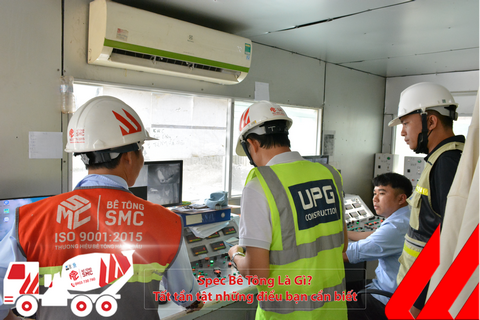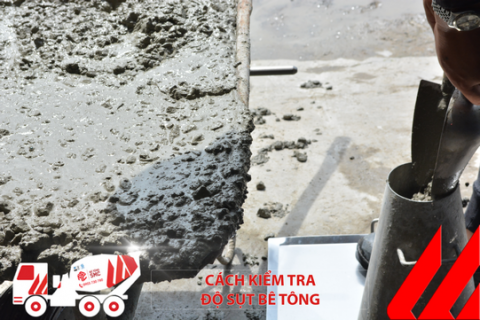Frequently asked Questions
Concrete engineering advice
Business contact
Causes of Concrete Steel Corrosion and Remedies with SMC
1. What Causes Concrete Steel Corrosion?
A staggering statistic reveals that approximately 12 billion tons of RC are produced annually, making it the most produced artificial material globally.
Like most materials, signs of deterioration become apparent after prolonged use.
1.1. Factors Leading to Steel Reinforced Concrete Corrosion
1. Chemical factors:
- Carbonation: Decreases alkalinity, damages steel protection layers.
- Chloride ion ingress: Breaks protective layers, initiates electrochemical corrosion.
- Sulfate: Generates expansive salts, causing cracking, spalling.
- Acid: Dissolves cement, steel, reduces strength.
2. Physical factors:
- Water erosion: Surface erosion, thickness reduction, load-bearing capacity reduction.
- Abrasion: Mechanical friction erodes surfaces, reduces thickness, load-bearing capacity.
- Freeze-thaw cycles: Cracks, spalling due to ice expansion and contraction.
- High temperatures: Decreases strength, accelerates corrosion.
3. Biological factors:
- Microorganisms: Produce acids, corrosive substances, reduce strength.
- Moss, algae: Retain moisture, promote microbial growth.
4. Concrete quality:
- Poor-quality materials: Low-strength concrete prone to corrosion.
- Improper construction: Porous concrete, water infiltration, chemical exposure, susceptible to corrosion.
5. Environment:
- Marine environment: Chloride ion ingress, corrosion.
- Acidic environment: Acid dissolves, damages concrete.
- Cold environment: Cracking, spalling due to freeze-thaw cycles.
1.2. Carbonation Process in Reinforced Concrete
Currently, there are four mechanisms of chloride ion ingress through concrete protective layers:
- Permeation due to high chloride ion concentration on the concrete surface.
- Capillary suction.
- Permeation under surface tension.
- Migration due to potential difference.
Causes:
- Chloride ion ingress: Chloride ions can infiltrate concrete from various sources, including:
- Seawater: High chloride ion content, direct contact with concrete or through cracks, honeycombs, chloride ions infiltrate and concentrate on the steel surface.
- Anti-icing chemicals: Some anti-icing chemicals contain chloride, when spread on concrete surfaces, these chemicals can dissolve in water and penetrate concrete, leading to chloride ion ingress.
- Other sources: Salt-contaminated groundwater, coastal sand, pre-mixed concrete using seawater, etc.
- Chloride ion concentration: When chloride ions penetrate concrete, they move and concentrate at high-density areas, such as:
- Corners, edges of concrete structures: Due to lower concrete density, thinner protective cover, chloride ions easily penetrate and concentrate.
- Cracks, honeycombs in concrete: Chloride ions can move through these openings and concentrate on the inner steel surface.
- Junction between steel and concrete: Due to differences in physical and chemical properties between steel and concrete, chloride ions easily accumulate in this area.
Carbonation Process in Reinforced Concrete
In the atmosphere, when the steel surface is unprotected, rust formation begins, gradually peeling off. This reduces the pH of the void solution to 8.5, at this level, the passive film on the steel becomes unstable and the steel begins to corrode.
The carbonation process depends largely on the moisture content of concrete. Carbonate content increases significantly in concrete with high water-to-cement ratio, low cement content, short setting time, low strength, and high permeability.
Maintaining air humidity at 50-75% promotes strong carbonation activity.
At humidity below 25%, the degree of carbonation is considered insignificant.
At humidity above 75%, moisture in the pores limits CO2 infiltration.
According to general information, fresh concrete usually has a pH of 12-13, approximately 7,000-8,000 parts per million chloride are needed to initiate immersion steel corrosion. However, if the pH is lowered to the range of 10-11, the threshold for chloride corrosion will be significantly lower.
2. How to Remediate Concrete Steel Corrosion?
- Use high-strength concrete: High-strength, high-density concrete with fewer cracks, honeycombs limits water, chloride, and sulfate ingress. Use the required amount of mixing water and reduce the necessary mixing water when mixing concrete with additives, and use sand according to technical requirements to avoid the situation of slow-setting concrete.
- Corrosion-resistant steel reinforcement: Corrosion-resistant steel has better resistance to chloride ion corrosion than conventional steel. When casting concrete, a low water-to-cement ratio (w/c) should be used to slow down the chloride ion penetration process and the carbonation process through the voids in the concrete structure. The water-to-cement ratio should be ≤ 0.5 to slow down the carbonation process and ≤ 0.4 to limit chloride ion penetration.
- Increase the thickness of protective cover: A thicker protective cover provides a better barrier against water, chloride, and sulfate ingress.
- Use waterproofing additives: Waterproofing additives help minimize water and chloride ion infiltration into concrete.
- Protect the structure from environmental effects: Limit direct contact of concrete structures with seawater, anti-icing chemicals, and other chloride ion sources.
- Regular inspection and maintenance: Regularly inspect and maintain reinforced concrete structures to detect corrosion signs early and take timely remedial measures.
Concrete steel corrosion is a serious issue that requires attention and timely remediation measures to ensure the safety of structures. Hopefully, the insights shared by SMC in this article will enhance your understanding of this issue and help you choose appropriate remediation methods for your project. If you are looking for a reliable supplier of ready-mixed concrete and concrete pumping services, do not hesitate to leave your information at [CONTACT] for the earliest support!
Other news
Currently, ready-mix concrete is a top choice for many construction projects—both large and small—thanks to its convenience, consistent quality, and high construction efficiency. With extensive experience supplying commercial concrete for numerous key projects in the Southern region, SMC proudly offers a diverse range of ready-mix concrete products to meet the technical requirements of every type of construction.
A Comprehensive Guide to Concrete Specs – Everything You Need to Know
A Complete Guide to Concrete Specs – a set of technical parameters including concrete grade, slump, compressive strength, aggregate size, and mix ratio. This article helps you understand how to define, apply, and control concrete quality according to TCVN standards and practical construction conditions.
How to check the concrete slump
In construction and civil engineering, concrete slump test (or simple slump test) is the work performed at the construction site or in the laboratory that usually determines and measures the hardness, consistency of samples. Concrete before pouring concrete or casting maintenance, research or experiment samples.




